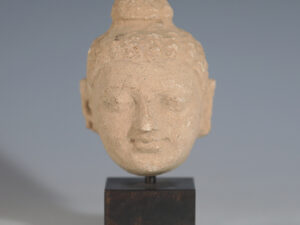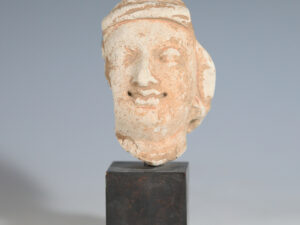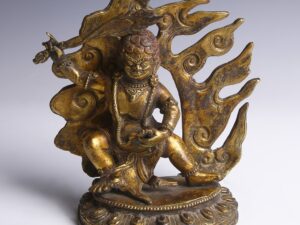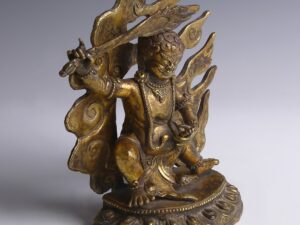Gandhara was an ancient region, once geographically located in the Near East. The production of art within the region, usually dated between the 2nd and 5th century AD, included a wide range of Buddhist sculptures with a strong influence from Hellenistic aesthetic styles. This influence can be attributed to the Greek presence within the region, conquered by Alexander the Great in 327 BC, and subsequently controlled by his generals after his death. This region therefore became part of the Indo-Greek kingdom, with a unique artistic Greco-Buddhist style, displaying a blend of various cultures, including Hellenistic, Indian, Parthian, and later Roman. The Classical influence is particularly evident in the enhanced realism of the statues, including wavy hair and crisp, planar intersection of the forehead and eyes. Gandharan artistic production of this period is almost exclusively related to Buddhism, and features depictions of stone Buddhas and Bodhisattvas carved in high relief, usually attached to the walls of religious and domestic shrines. These images would once have been coated with a fine stucco plaster and painted, in order to give a more colourful appearance. Stucco itself, skilfully modelled around a mud core, was also used as an alternative to stone.
To find out more about Gandharan art please see our relevant blog post: The Influence of Greek Art on Gandharan Statues.




















